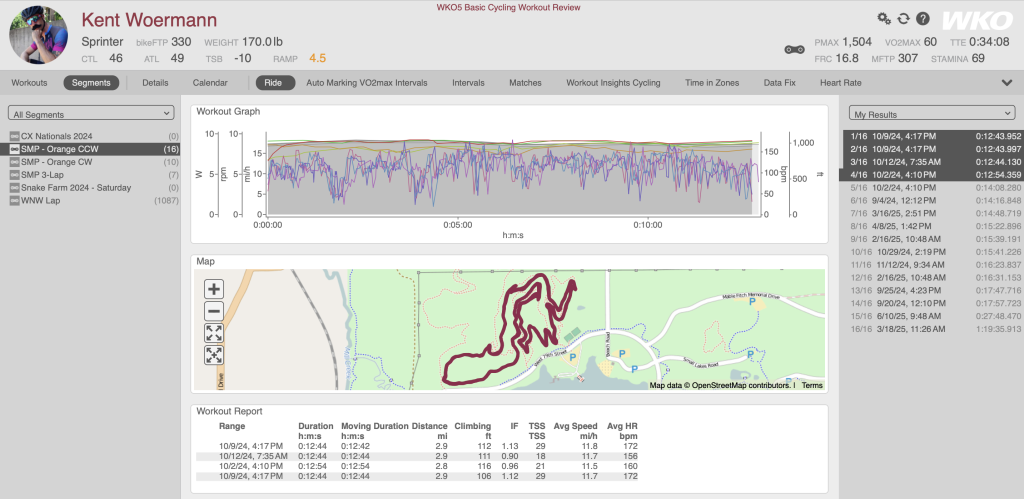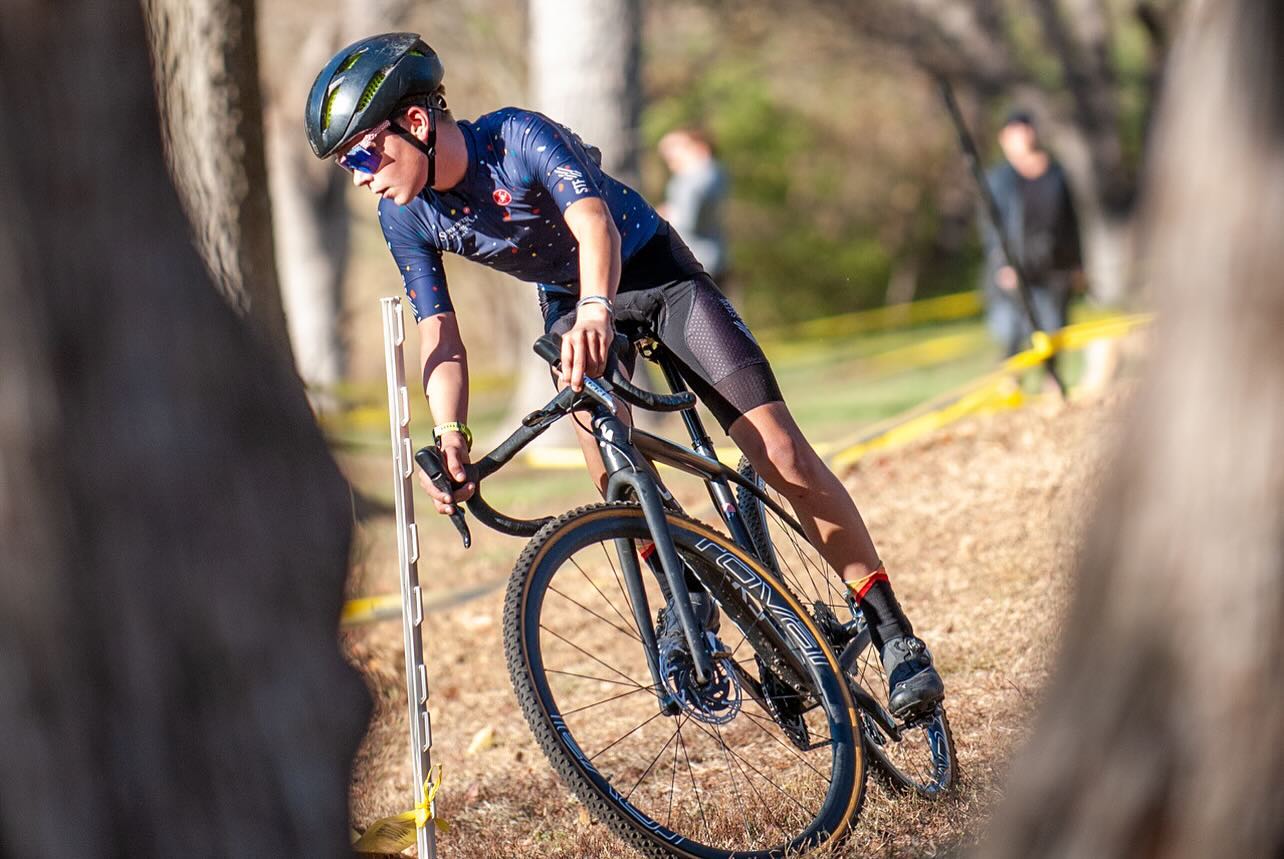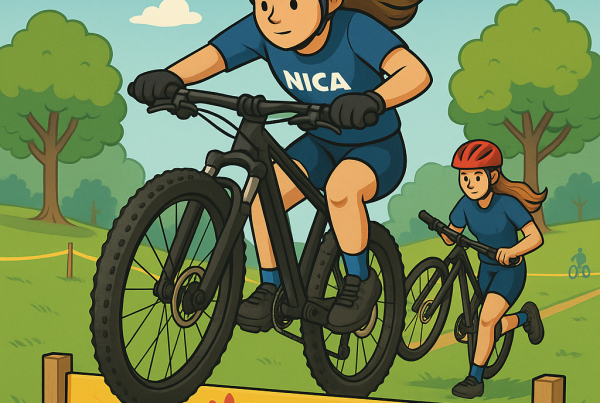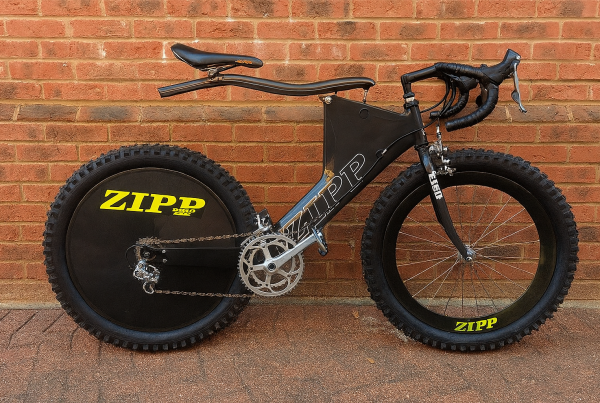I’d like to start Part Two of this series by noting that some of you are resistant to my attempts to convince you. And I’d like to push back by saying you objectively need cyclocross in your life. If you disagree, well… you’re wrong. I’m the coach here, so read this article and do what I tell you!
How do I know with so much certainty that you’re wrong about not wanting to race cyclocross—or think it’s not for you?
Well…
-
Can you perform a triple lindy off a diving board?
-
Can you confidently sprint into any corner knowing you’ll come out the other side with maximum speed and control?
-
Can you bunny hop over your three best friends lying on the ground without ruining their day?
If the answer is “yes” to all three, shoot me a message and help me write Part Three of this series. If the answer is “no,” keep reading.
It’s not that you need those exact skills (unless you’re auditioning for a diving competition), but if you’ve got goals in road, gravel, MTB—or obviously CX—you’ll benefit from sharper bike handling. And cyclocross is the fastest way to build that confidence.

Lessons From My Own Skill Gaps
I didn’t always have the handling skills I needed, and the lack of them cost me:
-
Road Racing: At the Papillion crit in Nebraska, two weird downhill, off-camber, decreasing-radius corners exposed me. I got gapped every lap, wasted all my matches chasing, and eventually blew up. The problem wasn’t fitness—it was cornering.
-
Mountain Biking: At the Berryman Epic, I had the power to ride away from the race winner early. But on the descents, I couldn’t hold his wheel—or anyone else’s in the top 10. I lost 20 minutes over 45 miles, mostly because I lacked descending skills.
-
Gravel: By the time I hit gravel, it felt different. Years of cyclocross and MTB gave me the confidence to handle sketchy terrain without hesitation, and my road background made pack riding feel easy. For the first time, I had the skills to match the power.
CX was the common denominator. It sharpened weaknesses and gave me tools I could carry into every discipline.
Why Cyclocross Builds Bike Handling Confidence
Cyclocross forces you to practice handling in ways no other discipline does. Every lap demands control in off-camber turns, decreasing-radius corners, and loose terrain. You learn how to distribute your weight, feather your brakes, and stay calm in sketchy conditions.
And because you’re doing it all on a bike that’s not really built for the job, the carryover is huge. When you go back to gravel, road, or MTB, everything feels easier.
Confidence is the Real Skill
Handling gains are tough to quantify, but confidence is easy to feel. It grows in stages:
-
You know nothing.
-
You’ve seen it done but can’t execute.
-
You know the pieces but lack consistency.
-
You can do it sometimes, but not every time.
-
You do it automatically—it’s second nature.
-
Bike handling enlightenment: blindfolded descents and no need for food or water.
Level 5 is where the magic happens. What once felt intimidating becomes automatic. Cyclocross gets you there faster than anything else.

Our good friend Scott is pictured here going OTB. Luckily, cyclocross is 95% grass and other forgiving surfaces, which makes pushing your limits far safer than it might be in other disciplines. He walked away unscathed from this crash.
The Top Skills Cyclocross Teaches You
-
Cornering control – entering and exiting turns smoother and faster.
-
Braking technique – learning when to feather and when to let it rip.
-
Balance on loose terrain – staying upright in mud, sand, or gravel.
-
Weight distribution – handling off-cambers and tricky features.
-
Match-burning efficiency – surging, recovering, and surging again without panic.
These aren’t “CX-only” skills—they’re exactly what make you stronger and safer everywhere.
A Nerdy Way to Track It
So, how do you track your bike handling progress?
Here’s a method that uses the tech you already have:
Step 1: Pick a Loop
Choose a short, uninterrupted course you can repeat. CX loops are great, but a twisty MTB trail works too. Start simple—family trails even!—and increase complexity over time.
Step 2: Auto-Lap by Location
Set your cycling computer to “auto lap on location” so each lap is recorded at the same point.
Step 3: Ride It Like You Mean It
Hit the lap button and go! Do at least three laps at race pace (or if you’re racing, just let the race be your test).
Step 4: Review Your Data
Check:
-
Lap time
-
Average power
-
Normalized power (NP)
-
Average heart rate (not always useful, but it adds context)
Example:
-
Lap 1: 6:36 – 210 AVG – 258 NP
-
Lap 2: 6:37 – 208 AVG – 250 NP
-
Lap 3: 6:35 – 205 AVG – 245 NP
-
Lap 4: 6:34 – 206 AVG – 244 NP
What does this show? The rider pushed hard early, settled in, then got a little faster while using less energy. Lower NP with steady lap times = smoother handling and more efficient pacing.
In real races, data will be messier. But if you repeat the same loop week after week, you’ll start to see trends. With software like WKO5, you can even create Smart Segments to track your laps automatically. I’ve found them especially useful on familiar training loops—like the Orange Loop at Shawnee Mission Park. Over time, these benchmarks give you a clear picture of both fitness and bike handling improvements.

Smart Segments You can do this manually with a spreadsheet, or automatically with software like WKO5. It’s a great way to use power data from CX or MTB training and racing to analyze how effective your handling and pacing were on a specific loop.
The Takeaway
Every discipline tests your handling, but cyclocross delivers the most concentrated dose of skills work. Racing a “road bike with knobbies” on a technical CX course builds confidence that carries directly into road, gravel, and MTB. Underbiking every lap makes your other bikes feel like magic carpets.
So let me be clear: your resistance is futile. You should be racing cyclocross this fall—no matter what.
In Part Three, I’ll explain why sucking at cyclocross is actually the best reason to keep doing it. Until then, start hunting for CX tires—they’re surprisingly hard to find.






